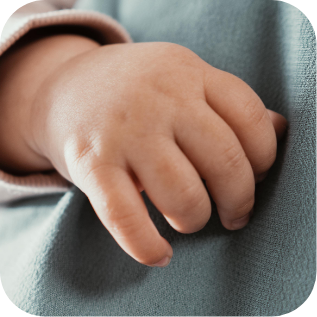An embryo transfer takes only a few minutes. It is a routine procedure and can be performed without anaesthesia. In consultation with the parents-to-be, the physician will insert the embryo(s) into the woman’s uterus in accordance with the legal regulations. To do this, the doctor will use a soft plastic catheter. At this point, the embryos are barely visible to the human eye and are in a tiny droplet of medium – this tiny droplet is inserted completely painlessly into the uterine cavity.
Once the embryos are in the uterus, they can implant in the lining of the uterus where they will continue to develop. The patient can go home immediately after the surgery.
There are no specific behaviour guidelines after an embryo transfer. It is best for the patient to return her normal everyday life. In the past, women were prescribed rest and several hours (or even days) of bed rest after an embryo transfer. However, according to more recent findings, this does not have a beneficial effect on the pregnancy rate, and, in worse cases, can even be counterproductive, as long periods of immobilisation (bed rest) can increase the risk of thrombosis. You should, of course, avoid nicotine, alcohol and other known unhealthy stimulants. It is also advisable to pursue a healthy lifestyle.
Whether or not the embryo transfer is successful depends mainly on whether the transferred embryo has suitable potential for further development. Once the embryo transfer has been performed, there is little the couple can do to influence the success of the attempt. Two weeks after the transfer, you will be able to find out whether the implantation of the embryo was successful by taking a pregnancy test.
The process of embryo transfer entails virtually no risks. According to the German Embryo Protection Law, the number of embryos capable of development created per cycle may not exceed the number to be transferred to the patient (a maximum of three).
Transferring two ideal embryos leads to pregnancy after IVF therapy in 44 percent of embryo transfers in patients under 30, and around 27 percent for 40-year-olds (DIR 2015). Of these, around 22 percent become pregnant with twins.
After embryo transfer of three embryos, up to 27 percent of the pregnant women become pregnant with twins and up to 4 percent with triplets. A multiple pregnancy can, however, be dangerous for both the expectant mother and the children. It is therefore considered to be a high-risk pregnancy. For this reason, triplet pregnancies in particular should therefore be avoided at all costs. In countries with selective blastocyst culture, only one embryo per transfer is therefore inserted in the uterine cavity, and only in cases of reduced pregnancy chances are multiple embryos transferred.
If a pregnancy occurs after an embryo transfer, the pregnancy hormone hCG formed by the pregnancy can lead to hyperstimulation syndrome. This can cause the ovaries to enlarge and can result in water retention in the stomach and chest area. In the worst case, hospitalisation may be necessary. In any case, an individual consultation and explanation will be provided by the treating physician, taking into account your personal circumstances and any concerns you may have.
Excess embryos – i.e. embryos not required for subsequent attempts – are fortunately very rare. If the pregnancy hormone level does not rise following an embryo transfer (negative pregnancy test), it is beneficial for the patient to be able to fall back on cryopreserved (pre-)embryos so that she doesn’t have to repeat stimulation treatment and follicular aspiration. Freezing embryos (cryopreservation) is not normally permitted in Germany under the Embryo Protection Law. However, there may be individual cases in which an embryo transfer cannot be done for certain reasons. In this case, the excess embryos can be cryopreserved for a later attempt.






